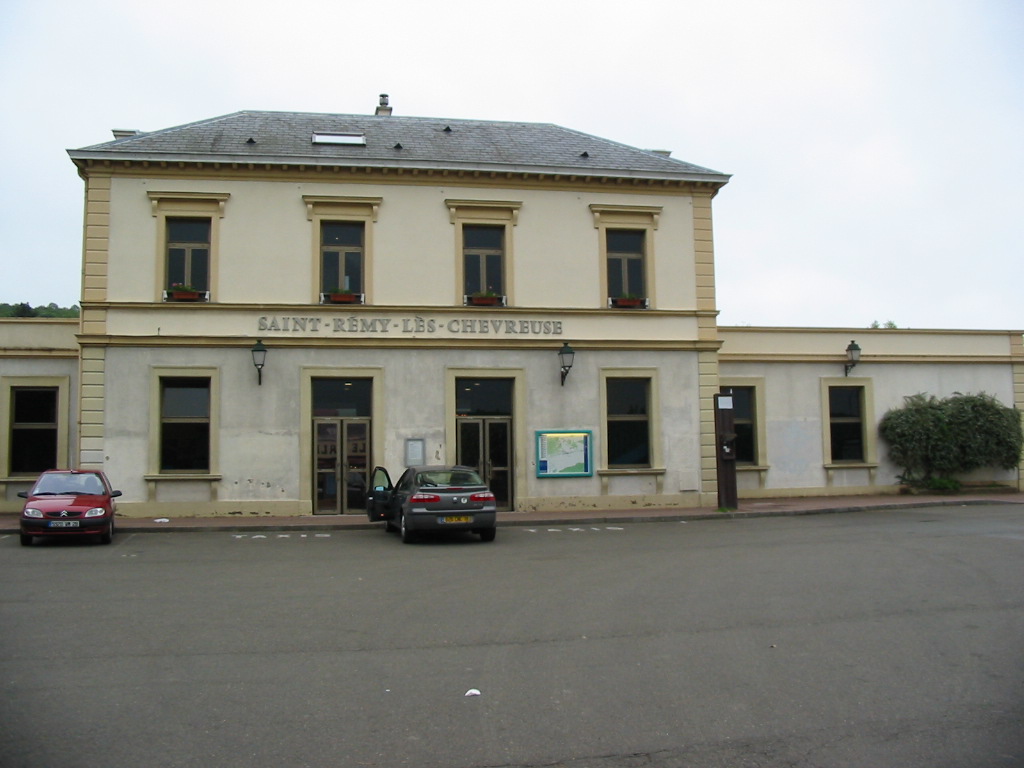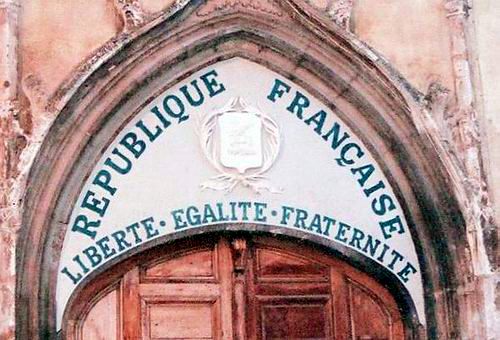|
Joué-lès-Tours
Joué-lès-Tours (, literally ''Joué near Tours'') is a commune in the Indre-et-Loire department in central France. It is the largest suburb of the city of Tours, and is adjacent to it on the southwest. Population Toponymy The name of Joué-lès-Tours appears in its form "Gaudiacus" in the 6th Century. It corresponds to a toponymic type frequently found in Christian Gaule, that gave different variants depending on the region: Joué (west of France), Jouy (center and north), Jouey (east), Gouy (Normandy/Picardy), Gaugeac, Jaujac (south). It is composed of the Christian name "Gaudius", meaning "fortunate", "blessed" (gaudia > joy, in Latin) and with the Gallo-Roman suffix -ACU, meaning "place of", "property of". History Joué-lès-Tours was the site of the 20 December 2014 Tours police station stabbing. Controversy In February 2010 the mayor, Philippe Le Breton, added the word ''laïcité'' underneath the French national motto on the town hall's façade. [...More Info...] [...Related Items...] OR: [Wikipedia] [Google] [Baidu] |
2014 Tours Police Station Stabbing
On 20 December 2014, a man in Joué-lès-Tours near the city of Tours in central France entered a police station and attacked officers with a knife, shouting "Allahu Akbar" and injuring three before he was shot and killed. The attack was categorised as a case of religiously inspired terrorism by Europol, and has been reported by Europol as well as mappings by CNN and AFP as inspired by the Islamic State of Iraq and the Levant (ISIL). Perpetrator The attacker was identified as Bertrand Nzohabonayo, age 20, a French citizen and former rap musician born in Burundi in 1994, he was known to the police for minor crimes but was not on any watchlist. The attacker had taken ''Bilal'' as his new name upon conversion to Islam, and had been posting Islamist material on his Facebook page, including a photograph of the black flag of the Islamic State. In Burundi, police arrested the attacker's brother, a man with known Islamist sympathies and claimed that they had informed French authoriti ... [...More Info...] [...Related Items...] OR: [Wikipedia] [Google] [Baidu] |
Communes Of The Indre-et-Loire Department
The following is a list of the 272 communes of the Indre-et-Loire department of France. The communes cooperate in the following intercommunalities (as of 2020):BANATIC Périmètre des EPCI à fiscalité propre. Accessed 3 July 2020. * Tours Métropole Val de Loire * Communauté de communes de Bléré Val de Cher * Communauté de communes du Castelrenaudais * [...More Info...] [...Related Items...] OR: [Wikipedia] [Google] [Baidu] |
Tours Métropole Val De Loire
Tours Métropole Val de Loire is the '' métropole'', an intercommunal structure, centred on the city of Tours. It is located in the Indre-et-Loire department, in the Centre-Val de Loire region, central France. It was created in March 2017, replacing the previous ''Communauté urbaine Tour(S) Plus''. Its area is 389.2 km2. Its population was 294,220 in 2018, of which 136,463 in Tours proper.Comparateur de territoire INSEE. 4 April 2022. Composition Tours Métropole Val de Loire consists of the following 22 communes:Tours M� ...[...More Info...] [...Related Items...] OR: [Wikipedia] [Google] [Baidu] |
Lès
The word ''lès'' (, and with liaison) is an archaic French preposition meaning "near", "next to". Today it occurs only in place names to distinguish places of the same name. The word ''lès'' has two variants: ''lez'' and ''les''. The latter should not be confused with the plural definite article ''les'' (e.g. ''les-Bains'', "the Baths"). Etymology The word ''lès'' and its variants derive from late Latin ''latus'', "side". Examples Lès * Villeneuve-lès-Avignon, near Avignon * Beaumont-lès-Valence, near Valence * Saint-Rémy-lès-Chevreuse, near Chevreuse * Margny-lès-Compiègne, near Compiègne * Asnières-lès-Dijon, near Dijon * Fontaine-lès-Dijon, near Dijon * Hauteville-lès-Dijon, near Dijon * Neuilly-lès-Dijon, near Dijon * Perrigny-lès-Dijon, near Dijon * Plombières-lès-Dijon, near Dijon * Sennecey-lès-Dijon, near Dijon * Garges-lès-Gonesse, near Gonesse * Bonchamp-lès-Laval, near Laval * Fontaine-lès-Luxeuil, near Luxeuil-les-Bains * ... [...More Info...] [...Related Items...] OR: [Wikipedia] [Google] [Baidu] |
Indre-et-Loire
Indre-et-Loire () is a department in west-central France named after the Indre River and Loire River. In 2019, it had a population of 610,079.Populations légales 2019: 37 Indre-et-Loire INSEE Sometimes referred to as , the name of the historic region, it nowadays is part of the Centre-Val de Loire . Its prefecture is |
Picardy
Picardy (; Picard and french: Picardie, , ) is a historical territory and a former administrative region of France. Since 1 January 2016, it has been part of the new region of Hauts-de-France. It is located in the northern part of France. History The historical province of Picardy stretched from north of Noyon to Calais via the whole of the Somme department and the north of the Aisne department. The province of Artois (Arras area) separated Picardy from French Flanders. Middle Ages From the 5th century, the area formed part of the Frankish Empire and, in the feudal period, it encompassed the six countships of Boulogne, Montreuil, Ponthieu, Amiénois, Vermandois and Laonnois.Dunbabin.France in the Making. Ch.4. The Principalities 888–987 In accordance with the provisions of the 843 Treaty of Verdun, the region became part of West Francia, the later Kingdom of France. The name "Picardy" derives from the Old French ''pic,'' meaning " pike", the characteristic weapon us ... [...More Info...] [...Related Items...] OR: [Wikipedia] [Google] [Baidu] |
Muslim
Muslims ( ar, المسلمون, , ) are people who adhere to Islam, a Monotheism, monotheistic religion belonging to the Abrahamic religions, Abrahamic tradition. They consider the Quran, the foundational religious text of Islam, to be the verbatim word of the God in Abrahamic religions, God of Abraham (or ''Allah'') as it was revealed to Muhammad, the Muhammad in Islam, main Islamic prophet. The majority of Muslims also follow the teachings and practices of Muhammad (''sunnah'') as recorded in traditional accounts (''hadith''). With an estimated population of almost 1.9 billion followers as of 2020 year estimation, Muslims comprise more than 24.9% of the world's total population. In descending order, the percentage of people who identify as Muslims on each continental landmass stands at: 45% of Islam in Africa, Africa, 25% of Islam in Asia, Asia and Islam in Oceania, Oceania (collectively), 6% of Islam in Europe, Europe, and 1% of the Islam in the Americas, Americas. Addition ... [...More Info...] [...Related Items...] OR: [Wikipedia] [Google] [Baidu] |
Liberté, égalité, Fraternité
''Liberté, égalité, fraternité'' (), French for "liberty, equality, fraternity", is the national motto of France and the Republic of Haiti, and is an example of a tripartite motto. Although it finds its origins in the French Revolution, it was then only one motto among others and was not institutionalized until the Third Republic at the end of the 19th century. (abridged translation, ''Realms of Memory'', Columbia University Press, 1996–98). Debates concerning the compatibility and order of the three terms began at the same time as the Revolution. It is also the motto of the Grand Orient and the Grande Loge de France. Origins during the French Revolution Some claim that Camille Desmoulins in number 35 of ''Révolutions de France et de Brabant'', published on July 26, 1790. Speaking of the festival of July 14, 1790, he described "the citizen-soldiers rushing into each other's arms, promising each other ''liberty, equality, fraternity.''" (French: ''les soldats-citoyen ... [...More Info...] [...Related Items...] OR: [Wikipedia] [Google] [Baidu] |
Laïcité
(; 'secularism') is the constitutional principle of secularism in France. Article 1 of the French Constitution is commonly interpreted as discouraging religious involvement in government affairs, especially religious influence in the determination of state policies. It also forbids government involvement in religious affairs, and especially prohibits government influence in the determination of religion. Secularism in France includes a right to the free exercise of religion. French secularism has a long history: for the last century, the French government policy has been based on the 1905 French law on the Separation of the Churches and the State, See drop-down essay on "The Third Republic and the 1905 Law of Laïcité", which is however not applicable in Alsace and Moselle. While the term ''laïcité'' has been used from the end of the 19th century to denote the freedom of public institutions from the influence of the Catholic Church, the concept today covers other religious ... [...More Info...] [...Related Items...] OR: [Wikipedia] [Google] [Baidu] |
Jaujac
Jaujac () is a commune in the Ardèche department in southern France France (), officially the French Republic ( ), is a country primarily located in Western Europe. It also comprises of overseas regions and territories in the Americas and the Atlantic, Pacific and Indian Oceans. Its metropolitan area .... It was the site of the love story of Guillem de Balaun, the historicity of which is dubious. Geography The village lies in the northeastern part of the commune, on the right bank of the river Lignon, which flows northeast through the commune. Population See also * Communes of the Ardèche department References Communes of Ardèche Ardèche communes articles needing translation from French Wikipedia {{Ardèche-geo-stub ... [...More Info...] [...Related Items...] OR: [Wikipedia] [Google] [Baidu] |
Gaugeac
Gaugeac (; oc, Gaujac) is a commune in the Dordogne department in Nouvelle-Aquitaine in southwestern France. Population Geography Gaugeac borders eight other communes including one, Parranquet, in the department of Lot-et-Garonne. To the north, the communal territory is about fifty meters from that of Lavalade. See also *Communes of the Dordogne department The following is a list of the 503 communes of the Dordogne department of France. The communes cooperate in the following intercommunalities (as of 2020):Communes of Dordogne {{Dordogne-geo-stub ... [...More Info...] [...Related Items...] OR: [Wikipedia] [Google] [Baidu] |


